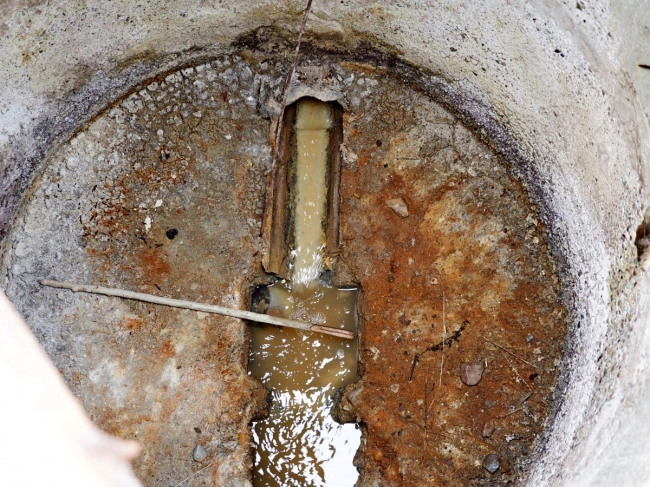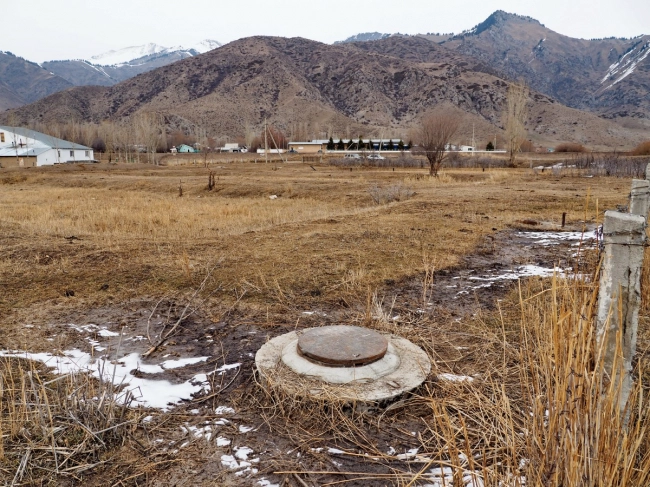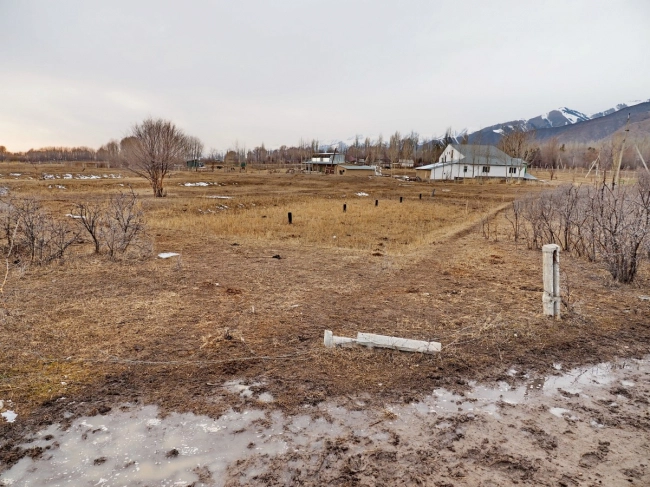Village of Zhylyu-Bulak. Pollution of the tributaries of the Tyup River (Dairy Spring cheese production plant)
42°45’5004″N 78°39’9741″E
The "Sut Bulak" cheese factory discharges domestic and technical wastewater untreated into the Tyup River and Lake Issyk-Kul.
One of the main sources of environmental pollution is industrial production, which involves significant volumes of natural resources. The dairy industry is no exception and is also one of the sources of environmental pollution, with dairy waste posing a serious threat to the environment.
Impurities contained in the wastewater from milk processing enterprises include losses of milk and dairy products, production waste, and reagents primarily used for cleaning containers and equipment. The volume of wastewater depends on the production profile, the presence of recirculation water supply systems, and ranges from 1.0 to 6.0 liters per 1 liter of processed milk. The concentration of impurities also depends on the type of products produced.
When dairy production waste is discharged into water bodies, all aquatic microflora dies, and after a few days, when the milk begins to sour, a sharp unpleasant odor appears.
When using phosphorus-containing detergents, wastewater can contain high concentrations of phosphorus. Additionally, 100 grams of whole milk contains about 93 mg of phosphorus, so losses of milk and dairy products also lead to the entry of phosphorus compounds into wastewater.
Wastewater from milk processing enterprises is characterized by high daily variability in their qualitative composition and flow rates, as well as fluctuations in pH values. Changes in pH are related to the operating mode of the enterprise and the type of cleaning reagents used. When using detergents based on organic acids, there is rapid hydrolysis of organic substances from milk and dairy products, and the pH of the wastewater drops to 2.0-3.0. When using soda and other alkaline detergents, the wastewater becomes alkaline with a pH of 9.0-11.0.
Meanwhile, the "Sut Bulak" company commented on the activists' statement. They claim that all environmental standards and requirements are met in dairy production, and waste from production cannot enter either the Tyup River or, even more so, Lake Issyk-Kul.
FOR REFERENCE: JSC "Sut Bulak" was established on January 5, 1996, as a result of the intergovernmental Kyrgyz-Swiss Dairy Program. The company produces cheeses and various types of dairy products under the brands Dairy Spring and Milky Day. The "Sut Bulak" cheese factory, located in the Tyup district of the Issyk-Kul region, produces about 700 tons of cheese per year. Raw materials for processing are supplied by farmers from the Tyup district, which has more than 50 milk collection points. Initially, the factory's processing capacity was about 12 tons per day; now it processes up to 55 tons.
The "Sut Bulak" cheese factory discharges domestic and technical wastewater untreated into the Tyup River and Lake Issyk-Kul.
One of the main sources of environmental pollution is industrial production, which involves significant volumes of natural resources. The dairy industry is no exception and is also one of the sources of environmental pollution, with dairy waste posing a serious threat to the environment.
Impurities contained in the wastewater from milk processing enterprises include losses of milk and dairy products, production waste, and reagents primarily used for cleaning containers and equipment. The volume of wastewater depends on the production profile, the presence of recirculation water supply systems, and ranges from 1.0 to 6.0 liters per 1 liter of processed milk. The concentration of impurities also depends on the type of products produced.
When dairy production waste is discharged into water bodies, all aquatic microflora dies, and after a few days, when the milk begins to sour, a sharp unpleasant odor appears.
When using phosphorus-containing detergents, wastewater can contain high concentrations of phosphorus. Additionally, 100 grams of whole milk contains about 93 mg of phosphorus, so losses of milk and dairy products also lead to the entry of phosphorus compounds into wastewater.
Wastewater from milk processing enterprises is characterized by high daily variability in their qualitative composition and flow rates, as well as fluctuations in pH values. Changes in pH are related to the operating mode of the enterprise and the type of cleaning reagents used. When using detergents based on organic acids, there is rapid hydrolysis of organic substances from milk and dairy products, and the pH of the wastewater drops to 2.0-3.0. When using soda and other alkaline detergents, the wastewater becomes alkaline with a pH of 9.0-11.0.
Meanwhile, the "Sut Bulak" company commented on the activists' statement. They claim that all environmental standards and requirements are met in dairy production, and waste from production cannot enter either the Tyup River or, even more so, Lake Issyk-Kul.
FOR REFERENCE: JSC "Sut Bulak" was established on January 5, 1996, as a result of the intergovernmental Kyrgyz-Swiss Dairy Program. The company produces cheeses and various types of dairy products under the brands Dairy Spring and Milky Day. The "Sut Bulak" cheese factory, located in the Tyup district of the Issyk-Kul region, produces about 700 tons of cheese per year. Raw materials for processing are supplied by farmers from the Tyup district, which has more than 50 milk collection points. Initially, the factory's processing capacity was about 12 tons per day; now it processes up to 55 tons.


























Attention: Information based on submitted complaints